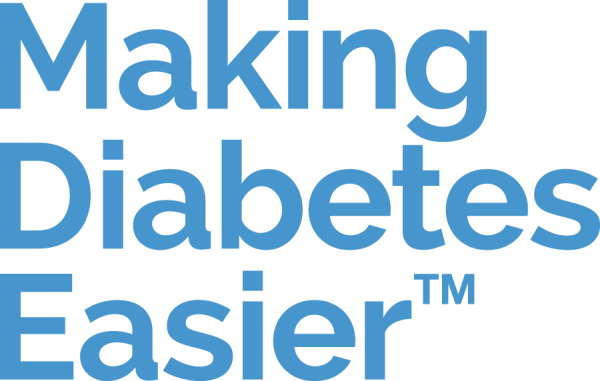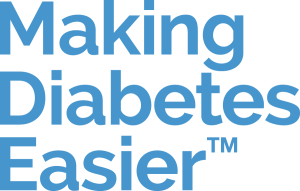Diabetes, hypoglycaemia and hyperglycaemia

Insulin is a vital hormone for our survival. Its role is to transport glucose in the blood to cells throughout the body. In people living with diabetes, insulin production is impaired or non-existent, resulting in abnormal changes in glycemia (blood glucose levels) [1,2].
We talk about hyperglycaemia when the amount of glucose in the blood is too high [1,2,3] and hypoglycaemia when it is too low [1,2,4,5]. In cases of diabetes, the major challenge is managing blood glucose levels and minimising the condition's impact of the condition on the person’s overall health [4,5].
Diabetes and hyperglycaemia: when the blood glucose level is too high

People with diabetes are subject to increased blood glucose levels [1,2]. Known as hyperglycaemia, these frequent spikes in blood glucose can present as one or more of the most common symptoms [1,2]:
- excessive thirst;
- frequent need to urinate;
- noticeable loss of energy accompanied by muscle weakness;
- long-term fatigue;
- nausea [1,2,3].
What blood glucose level is considered hyperglycaemic?
Hyperglycaemia is defined as a blood glucose level of 7.0 mmol/l or higher on an empty stomach or 11.0 mmol/l or higher when tested randomly during the day and in the presence of symptoms [3]. In untreated cases of diabetes, blood glucose can run as high as 27.8 mmol/l [1,2]! By comparison, glycaemia is considered “normal” when the blood sugar level is between 3.2 and 7.8 mmol/l.[1,2].
Severe hyperglycaemia can lead to acute complications such as ketoacidosis and hyperosmolar coma, which are life-threatening for people with diabetes[2,3]. To reduce the risk of hypoglycaemic and hyperglycaemic periods, people living with diabetes must manage their blood glucose levels at all times [3]. Appropriate diabetes management allows them to make the necessary adjustments depending on their type of diabetes and specific health issues: regular blood glucose measurement, appropriate diet, daily insulin injections, and/or oral diabetes medication [2,3].
Diabetes and hypoglycaemia: when the blood glucose level is too low

Inversely to hyperglycaemia, hypoglycaemia occurs when the blood glucose level is too low. It is a dangerous situation that can affect people injecting insulin or taking certain oral diabetes medications [1,2,4,5]. People with type 1 diabetes are more frequently prone to hypoglycaemic episodes as treatment in this form of the condition is usually based on insulin therapy [5].
What blood glucose level is considered hypoglycemic?
Hypoglycaemia is characterised by a blood glucose concentration/level equal to or less than 3.9 mmol/l [1,2,4,5].
There are two categories of symptoms specific to hypoglycaemia:
- adrenergic symptoms (tremors, palpitations, nervousness, anxiety, etc.), which generally appear first and should act as warning signs [2,4,5];
- neuroglycopenic symptoms (convulsion, fatigue, confusion, etc.), which result from the lack of glucose in the brain and central nervous system [1,2,4,5].
If hypoglycaemia is not treated, it can potentially lead to coma and death. It is vital to know how to recognise signs of hypoglycaemia in a person with diabetes [1,4,5]. The blood glucose level must be measured regularly [1,2,4,5], and if too low, you must act without delay [2,5]. Drinking or eating something sweet, for example, fruit juice will quickly start to raise the blood glucose level again [1,2,4,5]. Discuss the best hypoglycaemic treatment option for you with your diabetes care team.
Sources
- Institute for Quality and Efficiency in Health Care (IQWiG),Cologne,Germany. Hyperglycemia and hypoglycemia in type 1 diabetes. May 29, 2007; Last Update:June 29, 2017.
- Institute for Quality and Efficiency in Health Care (IQWiG), Cologne, Germany. Hyperglycemia and hypoglycemia in type 2 diabetes. May 29, 2007; Last Update: October 22, 2020 Institute for Quality and Efficiency in Health Care (IQWiG); 2006.
- Michelle Mouri, Madhu Badireddy. Hyperglycemia. StatPearls [Internet]. Treasure Island (FL) : StatPearls Publishing; 2020 Jan. 2020 Sep 10. PMID: 28613650 NBK430900.
- Elizabeth R Seaquist 1, John Anderson, Belinda Childs, Philip Cryer, Samuel Dagogo-Jack, Lisa Fish, Simon R Heller, Henry Rodriguez, James Rosenzweig, Robert Vigersky. Hypoglycemia and Diabetes: A Report of a Workgroup of the American Diabetes Association and The Endocrine Society. Diabetes Care. 2013 May; 36(5): 1384–1395. Published online 2013 Apr 13. doi: 10.2337/dc12-2480 PMCID: PMC3631867 PMID: 23589542.
- Philip Mathew, Deepu Thoppil. Hypoglycemia. StatPearls [Internet]. Treasure Island(FL) : StatPearls Publishing; 2020 Jan.2020 Mar 16. PMID: 30521262 NBK534841.





